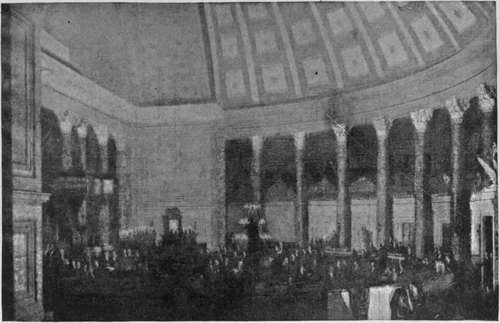Election Of President By House
Description
This section is from the book "The National Capitol. Its Architecture Art And History", by George C. Hazelton, Jr. Also available from Amazon: The National Capitol Its Architecture Art and History.
Election Of President By House
When the electoral votes were counted in the old Senate Chamber in 1825, it was found that John C. Calhoun was duly elected Vice-President, but that none of the candidates for President had received a majority of the votes. According to the Constitution, therefore, the House, after the Speaker had appointed a teller from each of the twenty-four States in the Union, proceeded to ballot by States for the three who had received the highest number, Andrew Jackson, John Quincy Adams and William H. Crawford. Upon the count it was found that Adams had received the votes of thirteen States, and the Speaker declared him elected President. At this announcement, there was some clapping of hands, but also hisses, and the galleries were cleared. The election caused much dissatisfaction among those who had voted for Jackson, as he had received the largest popular vote. Many attributed the result to an alliance between Adams and Clay, and John Randolph soon after in the Senate evidently referred to it when he said: "I was defeated, horse, foot, and dragoonsócut up, clean broke down by the coalition of Blifil and Black Georgeóby the combination, unheard of till then, of the Puritan with the Black-leg! " Randolph's repeated charges drew a challenge from Clay. The duel took place on the banks of the Potomac, but Randolph fired in the air and no one was hurt.

HOUSE OF REPRESENTATIVES, 1822 From the original painting, now 4im with age% by Samuel Fin/eJ Breese Morse % by permission of Daniil Huntington.
Continue to:
- prev: Notable Events At The Old Hall Of Representatives
- Table of Contents
- next: Attempted Assassination Of Jackson
